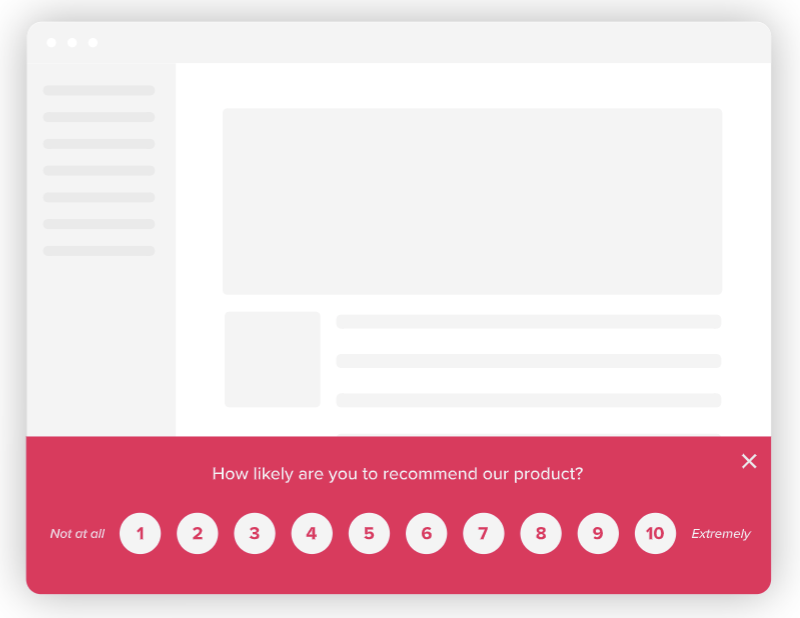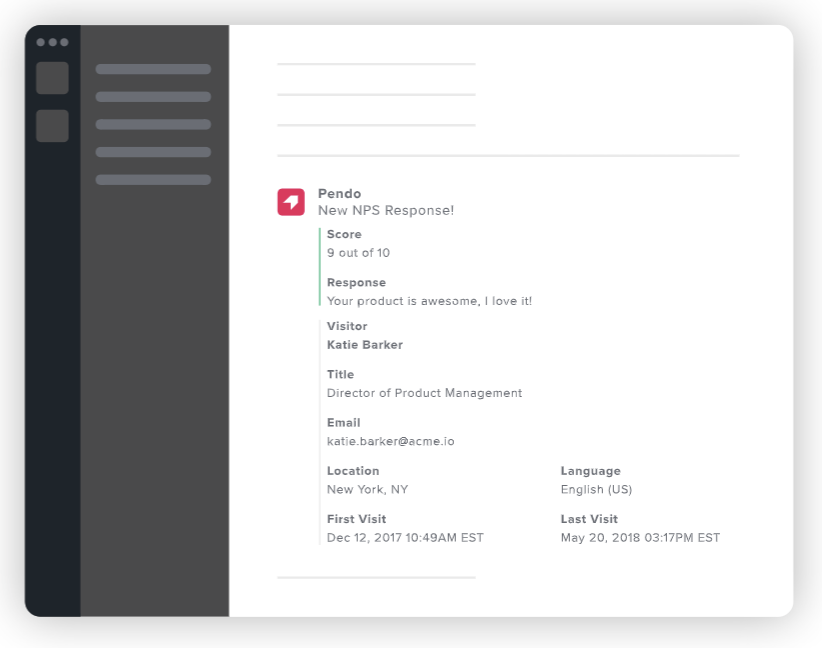How to build an NPS program that actually adds value to your business
Since its inception in the early 2000s, Net Promoter Score (NPS) has caught on as a key indicator of success for software companies. It’s popular for two important reasons. First, it ties a clear quantitative measurement—a score—to something that is traditionally very hard to quantify. Customer satisfaction is an important leading indicator for all sorts of financial outcomes. However, at its core, it is a qualitative measurement that provides a simple, consistent methodology for understanding (and benchmarking) customer sentiment.
The second reason NPS remains supreme? Its predictive power. The single question posed in the NPS survey (“How likely are you to recommend this product or service?”) captures not only positive sentiment, but also evangelism. A company’s promoters aren’t just happy—they are willing to spread the word about a product. And the more evangelists a product has, the more likely it is to grow.
NPS scores are now a key metric used across product and customer success teams, and are a fixture of many board presentations. However, that isn’t to say NPS doesn’t come with its own host of challenges. NPS is a frustrating metric. It can be fickle, ebbing and flowing depending on when you capture your users’ attention—and how you do so.
It can also be tough to understand. If your score drops by a few points, it’s not necessarily easy to get to the bottom of why. The true value lies in the qualitative responses your customers submit alongside the score. In order to get business value from NPS, you have to create an effective program to gather, synthesize, share, and act on this data.
Here are five best practices for building an effective NPS strategy:
1. Target the right users
NPS data is only as valuable as the people providing it. The first step in building a strong NPS program requires careful thought of who you want to target, and what their key characteristics are. Do you only want to survey active users of your product? Or, do you want to survey the decision makers who sponsor the use of your product? Do you want to survey brand new users in the same way as those who have completed onboarding and used the product for a while?
Aligning on who you want to hear from is the first step in creating an NPS program that delivers valuable insights.
2. Ask the question at the right time
The channel you choose to deliver your NPS survey can significantly impact your response rates. For example, companies who move from email to in-application collection see a jump as much as 10x. Pendo customer Cision doubled NPS survey response rates by moving from email to in-app delivery.

Similarly, the channel you choose can also impact the response quality. Surveys administered via email may bias responses towards your most motivated (positively and negatively) customers, or customers may be less likely to share negative feedback live on the phone. By collecting NPS in-app, on the other hand, you can deliver the survey based on product usage, to be sure you are reaching customers who can actually give you an informed perspective. By using in-app survey collection, Cisco was able to achieve a 68% response rate on their NPS survey and saw a 20% increase in their NPS score.
This also makes the data even more valuable, because you can analyze sentiment alongside feature usage and visitor behavior. By being intentional about how and when you collect user sentiment, you can collect more data while also being confident that it is relevant and valuable for your teams.
3. Identify common themes
While a cumulative NPS score is a valuable data point, the true value comes from understanding the “why” behind the number. Being able to explain changes in your score—either good or bad—requires you to identify common themes in your customers’ qualitative feedback. This helps internal teams determine the most impactful investments or improvements that will have the biggest impact on customer satisfaction.
Pro tip: Manually combing through qualitative NPS data to find these themes is expensive, time consuming, and often the first project to hit the cutting room floor. Pendo is using machine learning to remove the manual work, and automatically surface these NPS themes for you. Sign up here to be the first to get product updates as we get close to launch!
4. Share your NPS insights
Once you’ve identified common themes from NPS responses, now it’s time to share the wealth. This view into your user sentiment is valuable for teams across the organization.
Your product team needs to understand how the customer experience they deliver in the product affects customer sentiment, so they can prioritize the most impactful work on their roadmap. Your customer success team needs to identify unhappy customers in need of intervention, to better allocate limited resources. And your marketing team can leverage NPS insights to identify and cultivate potential champions. When everyone is engaged, the value of your NPS program grows significantly.
5. Close the loop
Your final step is to close the loop with the users who took the time to share valuable feedback via an NPS survey. Creating a clear system for responding to promoters, detractors, and passive users is crucial to sufficiently closing this loop with customers. How will you show appreciation for those who love your product? How will you properly route detractors who took the time to tell you why they’re unsatisfied? At Pendo, we leverage our NPS integration with Slack, so internal teams can see NPS responses as they come in and tag the right customer success representative to take the next step.

A well executed NPS program is a gold mine of customer sentiment data. Companies that lean into NPS can unlock an entirely new channel to understand their users, and in turn build a product more closely aligned with what users want. With the right investment and dedication, companies are able to build an NPS program that helps product, support, marketing, and leadership make the best decisions for their customers.
Learn more about Pendo’s recent investment in machine learning for NPS with NPS Insights.


